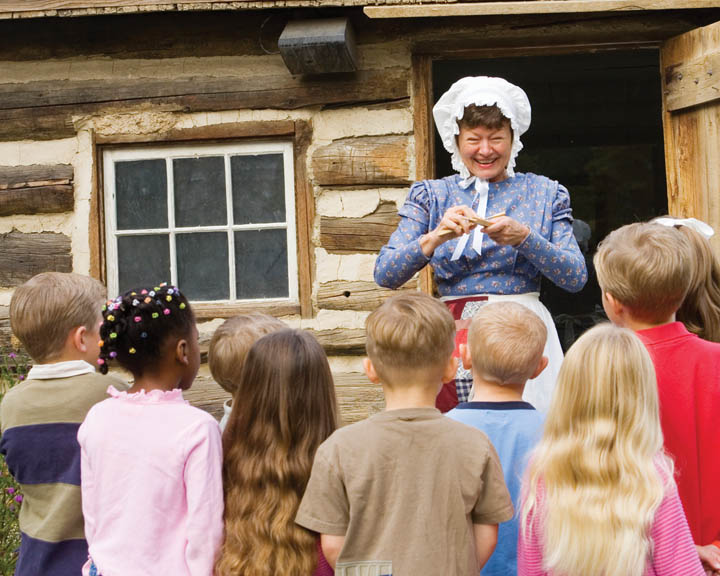According to a BYU news release, researchers there analyzed rings in the original wood used to build the Salt Lake Tabernacle of The Church of Jesus Christ of Latter-day Saints (or “Mormons“) during its recent renovation. By studying the width of the rings they could determine the rainfall in the area for a given year. One conclusion they reached, said BYU professor Matthew Bekker, was that “The 1840s were drier than any other decade in this tree-ring history, which spans the years 1702 to 1863.” In fact, 1846 – the year before the first Mormon pioneers arrived in the Salt Lake Valley – was the sixth driest year in the study, and those that followed weren’t much better. “It was a really rough time to establish a settlement based on irrigated agriculture,” said Bekker.
 Researchers also discovered that the Mormon pioneers must have used trees that had already died in their construction. Out of the 28 trees in the study, 5 of them had died or were cut earlier than 1847.
Researchers also discovered that the Mormon pioneers must have used trees that had already died in their construction. Out of the 28 trees in the study, 5 of them had died or were cut earlier than 1847.
“In this desert environment, the settlers would not overlook the dead trees,” Bekker said. “In fact there may be advantages to using post-mortem timber because you don’t have to take bark or twigs off and it’s already dried so it’s not going to warp anymore after you cut it.”
The Mormons came to Utah beginning in 1847 in order to escape persecution that had followed them from their beginnings in 1830 in upstate New York. Most recently they had built the beautiful city of Nauvoo on the banks of the Mississippi River in Illinois, only to be driven out by mob violence. The mobs had assassinated their prophet and leader Joseph Smith in 1844, but under the direction of his successor, Brigham Young, the Mormons made the arduous journey to the Salt Lake Valley – a previously unsettled desert land that nobody else wanted.
But, it offered the Mormons the protection they needed to establish themselves as a people. As their settlements spread throughout the west and they cultivated the land, people of other faiths settled the area as well.
Following is a description from a journal kept by a man who arrived in the Salt Lake Valley just two years after the first Mormon pioneers did:
There were more people (except emigrants and Indians) 200 to 1 than I had seen since I left the Missouri River. Where did they come from? How did they get here? I pinched myself to make sure that I was not dreaming. I have seen tables set for probably 100 or more, but here were tables for thousands. But the greatest marvel is how they could, in so short a time, produce in a desert, the variety of food stuffs with which the tables were spread. Men do not gather vegetables from sage brushes or cereals from cactus. The seeds, the tubers, the roots, the fouls, the pigs, the sheep, the cows, everything from which this abundance was produced had to all be transported a thousand miles or more over such roads as we have traveled. Even then, how could they in so short a time with so small a beginning, have produced so much. It seems incredible. I take off my hat to those who planned and executed it” (Diary of John H. Benson, May-Sept. 1849, typescript, Family and Church History Department Archives, The Church of Jesus Christ of Latter-day Saints, 48-51)
.
Today, Salt Lake City is a thriving metropolis, with plenty of green grass and trees all around. The city hosted the 2002 Winter Olympic Games and is home to many other events and amenities one might expect to see in a major city.
But when the Mormon pioneers arrived there, beginning in 1847, it was an unsettled desert. Making it into a place where people could live and thrive was a huge task, but they succeeded. Today a visitor to the city might never guess how difficult the area was to settle. But the individuals who settled it worked on tirelessly, building the foundations of a city that at that time they could only dream of.
For more information on the Mormon pioneers who settled Utah, visit www.lds.org/churchhistory/history.


